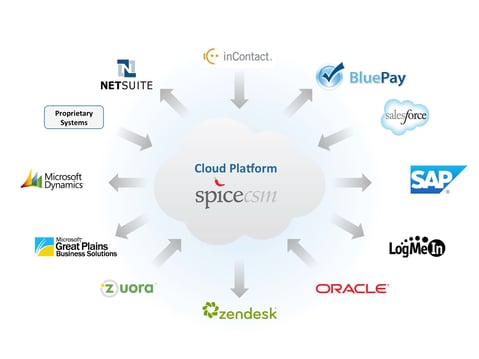 The job of a contact center manager isn’t easy and it requires balancing of many competing business initiatives. First and foremost, customer engagement is a high priority. A pleasant encounter with a company’s call center goes a long way to establishing goodwill, so an agent must provide a vibrant, rewarding experience. Solving problems quickly and responding to questions with valuable information can also result in repeat business from satisfied customers. Still, productivity is of utmost importance for both experienced and newly trained agents.
The job of a contact center manager isn’t easy and it requires balancing of many competing business initiatives. First and foremost, customer engagement is a high priority. A pleasant encounter with a company’s call center goes a long way to establishing goodwill, so an agent must provide a vibrant, rewarding experience. Solving problems quickly and responding to questions with valuable information can also result in repeat business from satisfied customers. Still, productivity is of utmost importance for both experienced and newly trained agents.
Technology helps agents to accomplish routine tasks and to find information that they need to solve a customer issue. However, using numerous software tools can create bottlenecks. Some companies maintain up to 15 different applications, resulting in conflicts among multi-brand and multi-function solutions. Disparate systems don’t link in terms of their features or the data they store, which has a severe impact on call center agent productivity.
The Downside of Disconnected Multi-Brand Applications
Each unique system is a necessity in the call center, so agents must navigate among applications that are often derived from multiple sources and brands. The list of shortcuts and operations within one solution may be lengthy and demanding, yet call center personnel needs to know each function in each of the 15 or so applications. Agents, especially new hires, will jot down notes on paper or refer to a notebook as a reminder on how to perform functions.
The result is that the workflow is external to the application rather than seamlessly becoming part of it: Personnel must turn away from the solution in order to make it work. Complexity and disparity mean that the agent’s desktop is cluttered with all the tools they access during the customer calls. Resolution times suffer and escalation becomes necessary.
Needless to say, maintaining multi-brand and multi-function applications is time consuming and wasteful for the call center. But to remove each and implement a single, integrated system that makes the agent’s job easier is outrageously expensive. Companies cannot afford to “rip and replace” their technology landscape every time a new application or upgrade becomes necessary. Businesses must take advantage of the solutions they have, regardless of the fact that they’re not efficient, cost considerable training resources and can threaten customer satisfaction.
Solving the Problem: The Unified Desktop
Connecting all necessary applications and processes under one roof is the answer to the multi-brand, multi-function dilemma. A unified desktop facilitates access to all applications, data, scripts and workflow processes by connecting disparate systems. The platform joins all unique solutions, no matter what source, brand or architecture. Other advantages are:
- Real-time integrations
- Seamless data passage via APIs among applications
- Elimination of the jumping around different solutions
- Agents no longer need to refer to external sources to determine proper operations
- Companies can still take advantage of their investment in multiple solutions, as these applications are running in the background.
Still, the most valuable benefit of implementing a unified desktop that connects disparate applications is the enhanced service agents are able to provide. Without distractions like navigating multiple solutions and incongruous functionality, they can better focus on the customer.
Wamt to learn more?



